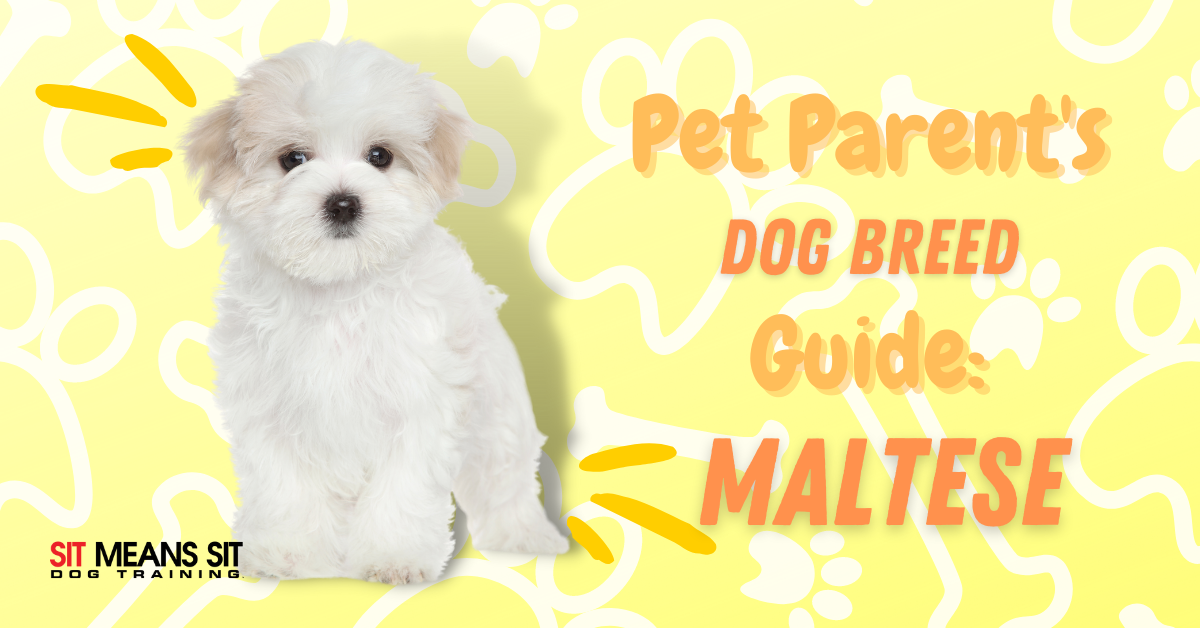
A Pet Parent’s Guide on the Maltese Dog Breed
Maltese dogs are described as intelligent, affectionate, and playful companions. This toy breed traditionally is recognized for its white, silky fur and kind nature. Maltese pups not only make a fun company, but also a sweet addition to the family. Read on to learn more about the breed!
History
The Maltese breed is one of the more ancient dog breeds around, originating from Malta island (even dating back to 300 B.C.). Scientists are unsure of the official reason for origin, but they determine that Maltese dogs have always been companion dogs. Around the 1300s Maltese dogs began being imported to Europe and became a staple breed for elite society/women. After many breeding and failed breeding attempts, the breed lost popularity. Around the 1880s, Maltese pooches gained recognition again and were officially recognized as their own breed.
Appearance & Characteristics
Maltese dogs tend to have a consistent appearance unless mixed with another breed. Maltese dogs are around 4-7 pounds and 9 to 10 inches in height. Any proportions outside the perimeters of these could result in health issues.
Maltese usually have a long, silky, flat coat. Coat colors are most often pure white but can vary between a tan and light yellow.
This breed has the characteristics of:
- Playfulness: 4/5
- Energy Level: 4/5
- Affection: 3/5
- Friendliness: 3/5
- Training Difficulty: 2/5
- Exercise Needs: 1/5
Is a Maltese Right for You?
There’s no doubt that Maltese dogs are universally well-loved, but are they the right breed for your lifestyle?
Maltese are considered great family dogs as they are affectionate, loyal, gentle, and playful! Maltese can sometimes be untrusting to those they don’t know, so it’s important to keep a watchful eye on them in public! But, once they are acquainted with others, they’re just as trusting and friendly as they are with their owners.
Maltese dogs can have a love/hate relationship with other dogs, especially if they are much bigger than them. Despite their small size, Maltese can be snappy so they are often better off in homes alone. But, Maltese pups behave fine around children. Although, many breeders suggest only getting Maltese pooches in families with more mature/older children to avoid any harm due to their small size.
Grooming
Maltese dogs’ grooming can be considered high maintenance due to their long coats and excessive tangling. Owners either groom their pups to have short hair or keep their long coats. But, the latter is harder to keep up with. Grooming usually consists of daily combing, bathing every 1-2 weeks, weekly nail trimming, tooth brushing, and ear cleanings at least once a week.
Training
Due to their small stature, the breed doesn’t require much daily exercise. Around 30 minutes a day will be adequate, much more than that could cause extreme fatigue because of their short legs.
When it comes to training, most Maltese dogs can grasp a concept very quickly. Their intelligence allows them to learn things like commands within 40-80 repetitions for successful retention. Housetraining also usually takes around 4-16 weeks to complete with positive reinforcement and repetition.
Health
Maltese pooches are generally healthy, although they can be prone to concerns like dental issues, shaker syndrome, hypothyroidism, hypoglycemia, and hearing loss. Regular veterinarian checkups, a proportionate diet, and supplements (as necessary) will help in trying to prevent any serious health issues.
Malteses are excellent companions, fast learners, and affectionate dogs to any who will care for them. Their loyal and obedient nature makes them one of the best canine companions to have in your family!
